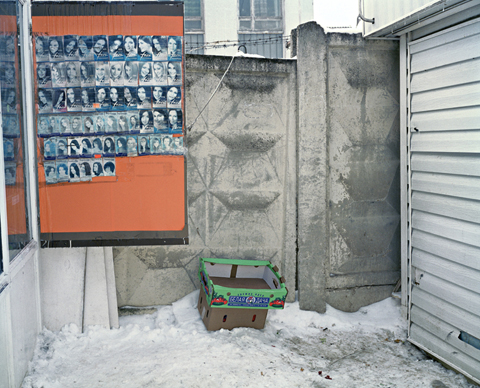It all starts with an incident of a double cop-killing -- when a strung-out hooker on a supposed spree of random killings kills a pair of police officers. From there it spirals into full-fledged civic agitation and unrest. The cops are sure the incident is testament to a situation of it being "open season on cops" in the community and accordingly over-react, thus sparking a reciprocal response from the precinct's residents.
The community is named very specifically in the film's title --
Fort Apache: The Bronx. The hooker in question was played by Pam Grier, reduced to a bit (and far from "empowering") role in the years following the decline of "blaxploitation" films. An absurdist x-factor to the film's overall story, she has a few scenes in the film before her character is inconsequentially killed off fairly early in the film. Between the setting and Greer's appearance in the film, one could argue that movie served as a multifold signifier of decline.
The film received, at best, lukewarm reviews on its release in 1981. It's greatest notoriety, however, came about due to the protests it inspired among resident of the maligned neighborhood, and among critics at large who objected to the way the film pandered to ethnic stereotypes. I remember the controversy at the time, and whenever the late '70s-early '80s genre/not-genre of "urban exploitation" comes up, its one of the first films to leap to mind -- right up there with the Hobbesian fantasies of
Assault on Precinct 13,
The Warriors, and
Escape from New York.
1 Considering that the film was released at the time that Ronald Reagan had secured the White House after campaigning on anecdotes about "welfare queens" and rhetoric about "making America great again," it wasn't difficult to figure out how the film's premise and portrayal of the South Bronx dovetailed with a certain burgeoning sentiment.
2
So
Fort Apache: The Bronx fits very squarely into the category I
mentioned earlier, and has always been one of the first films that comes to mind whenever the topic of "urban exploitation" films comes up. I only mention now it because yesterday National Public Radio did
a short segment on the film, revisiting it thirty years later. There's also
this article from the NY TImes archives circa 1993 that deals with the closure of the 41st Precinct House (the "Fort Apache" of the film's title). And then there's
this bit from Media Justice History Project chronicling the public protests of the movie.
* * * *
Speaking of which: A friend recently loaned me a copy of Joe Bob Briggs's
Profoundly Disturbed: Shocking Movies That Changed History!. It's an uneven affair, but I've been surprised to find that certain chapters are more nuanced and deeply researched than I would've expected. One of these is the chapter about
Shaft, in which Briggs situates the film in a number of broader contexts -- about its place in the career of Gordon Parks Sr., about its status in the "blaxploitation" genre, and about the history and inevitable fate of said genre. On this latter count, Briggs dwells on how blaxploitation films were received, from the criticism leveled by NAACP leader in the 1970s to how some of its participants saw it when looking back in hindsight. Among these is an interesting spiel from Isaac Hayes himself, who said:
"There were white writers, and they wrote their interpretation of how they thought it should go. They didn't have a deep understanding. They didn't live there. And they just kept dishin' out the same kind of thing, and it was insulting that they had the audacity to do that. But again, the people in the 'hood were eating it up because they finally had their own people on the screen. So that's what was wrong with it. I had some problems with blaxploitation. You had whitespolitation films, too: Chained Heat, The Texas Chain Saw Massacre, and all that junk. But they had other choices. We only had one."
To my surprise, I learned a couple of things from Briggs's chapter on
The Cabinet of Dr. Caligari, too.
_ _ _ _ _ _ _ _ _ _ _ _ _ _ _ _ _ _ _ _ _
1. Another highly controversial film of the time was the 1980 film Cruising, in which Al Pacino played a police officer going undercover to track a serial killer through the gay subculture on NYC. The film's portrayal of said subculture -- itself a metonym for societal decay -- unsurprisingly incited an outcry from the gay community. As far as the period-specif bankability of the "urban exploitation" cinematic meme, I suppose all signs point back to Taxi Driver.
2. The "welfare queen" anecdote had been in circulation for a while, having been frequently used by Alabama governor George Wallace during his own campaigns for the presidency in the early 1970s. Reagan revived the story and used it repeatedly, despite that fact that some of his campaign advisors recommended that he drop it, since the tale was an urban myth and had no basis in fact.






















